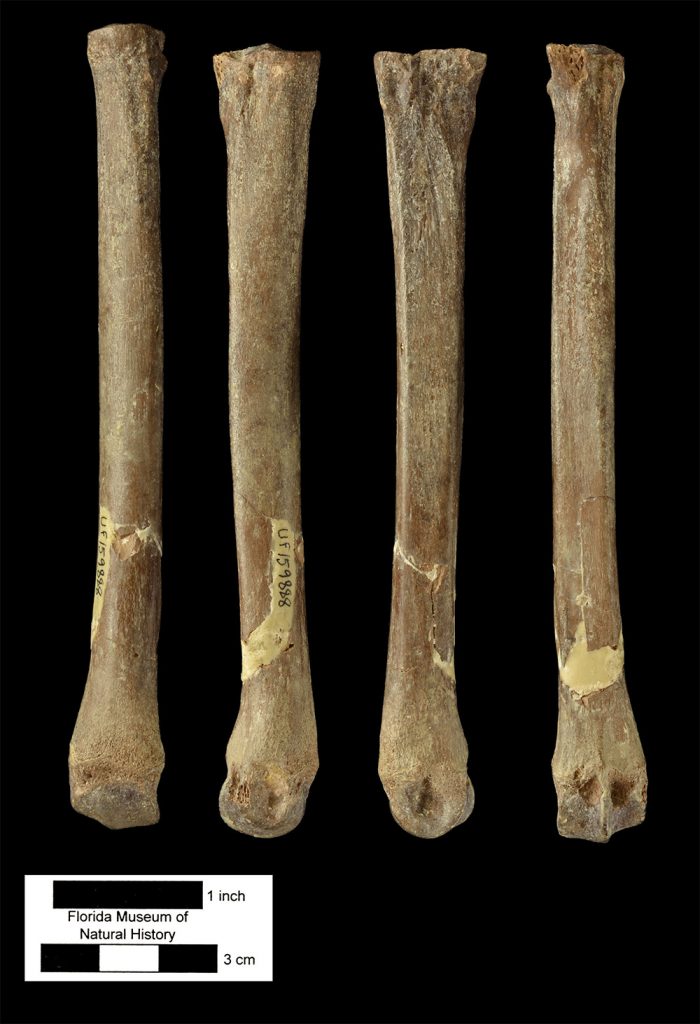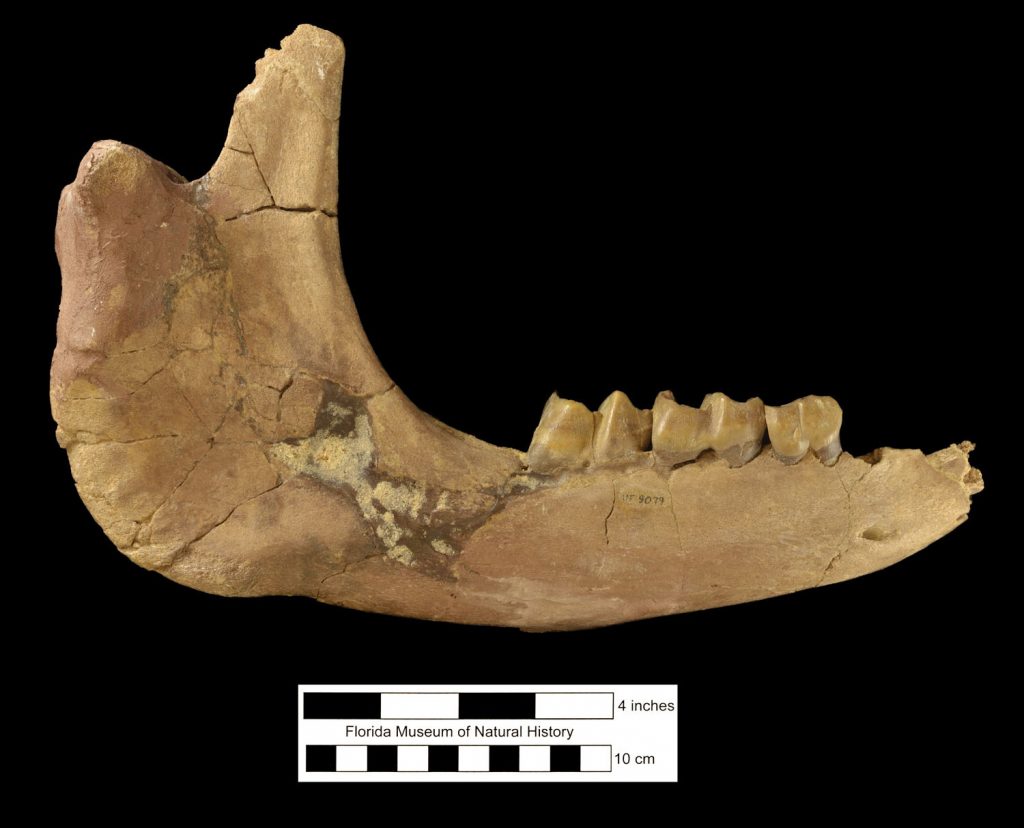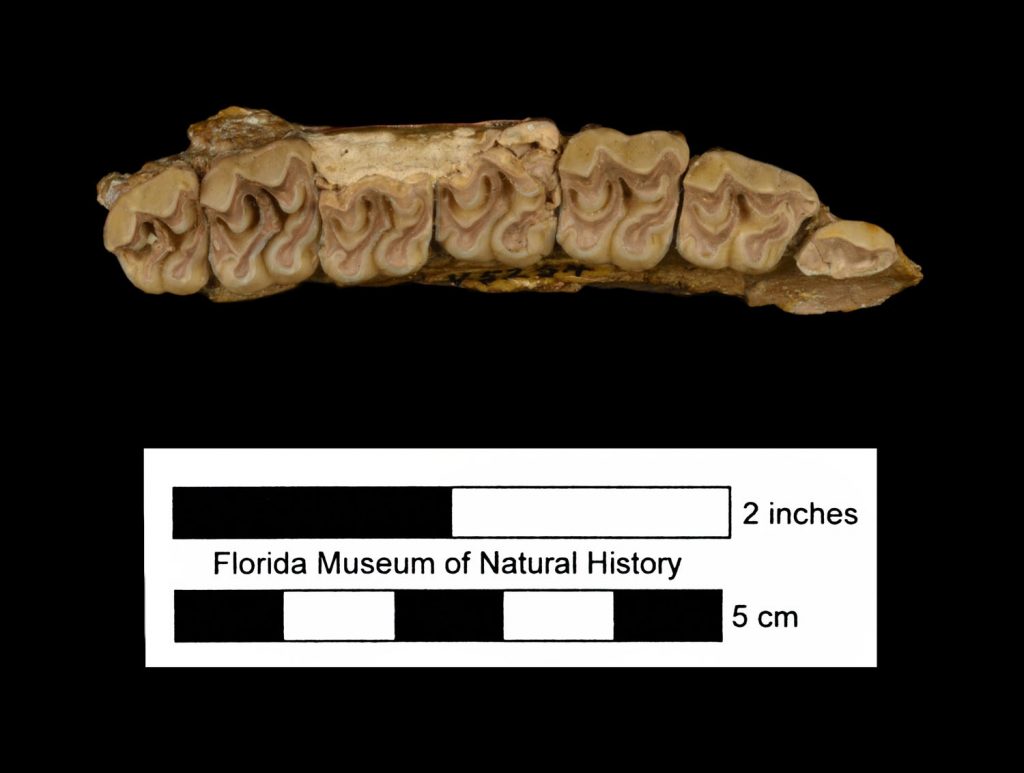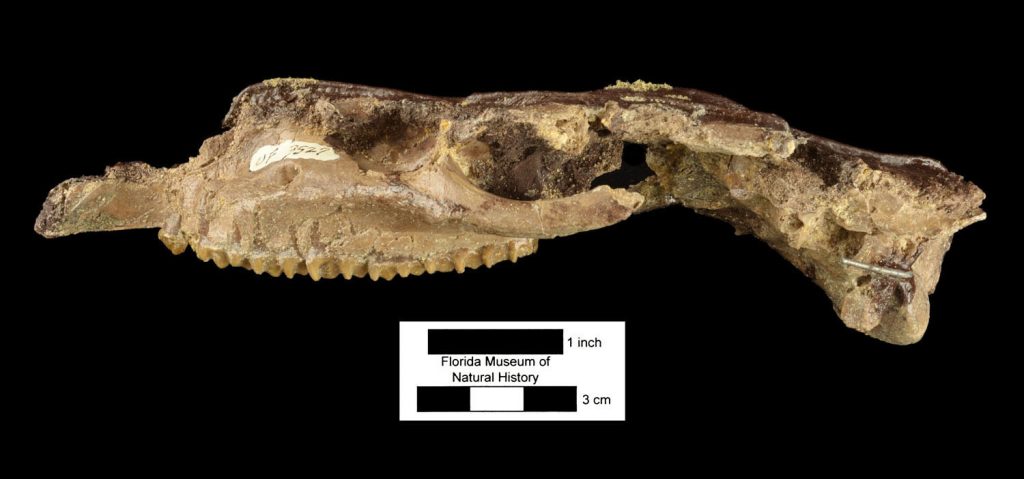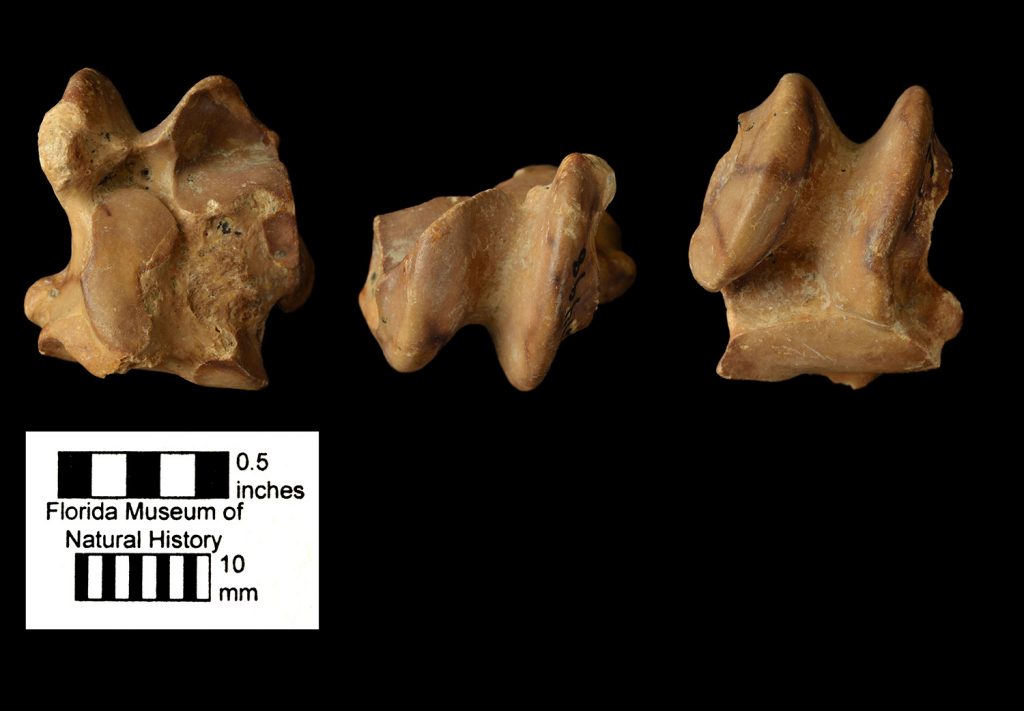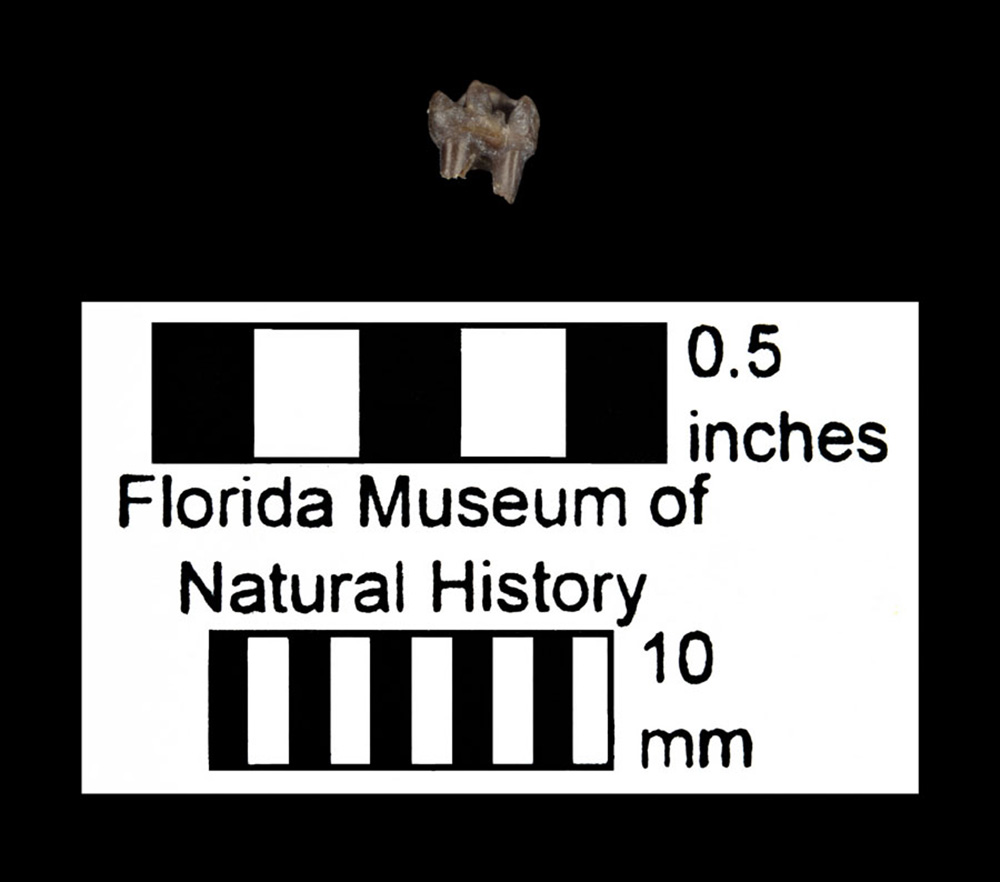Miocene Epoch
23 to 5 million years ago
The Miocene in Florida was a time of abundance with grassland savannahs and a variety of woodland habitats that supported a wide range of food for browsing and grazing animals. With more diversity of herbivores, came more specialized predators too. Explore some of the terrestrial animals of Florida’s Miocene:

This painting was commissioned from artist Bob Beach for our Florida Fossils exhibit. Learn about the Miocene animals represented:
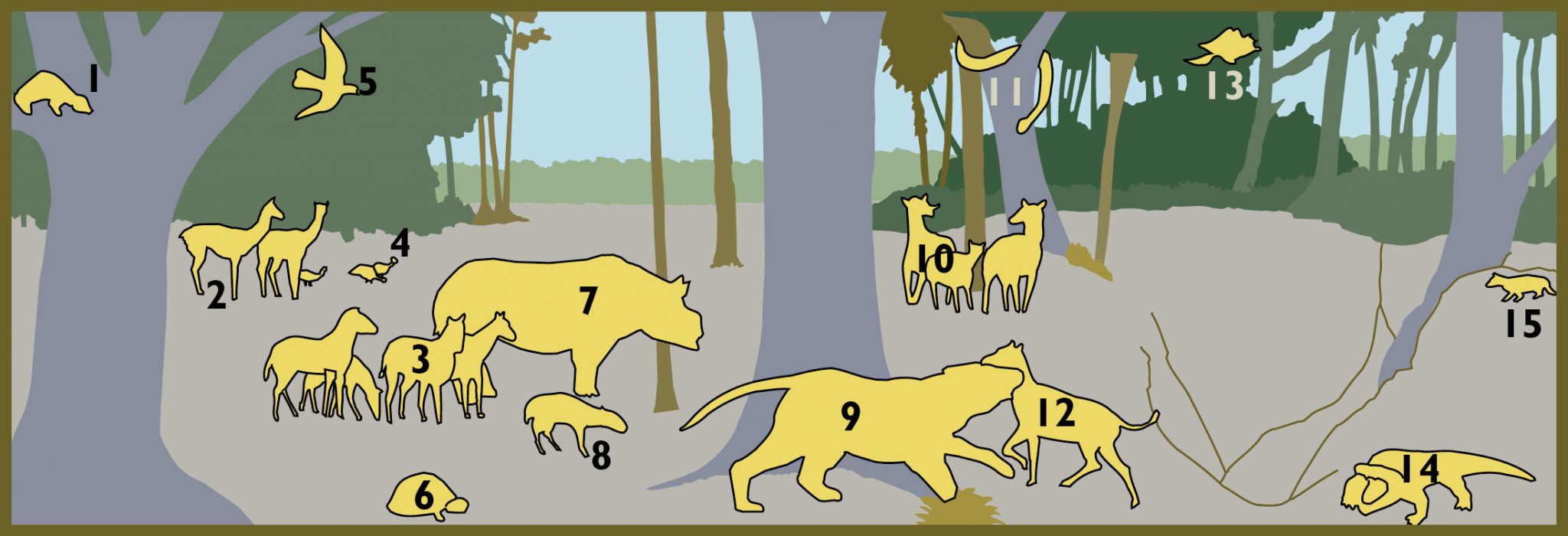
- Leptarctus ancipidens (tree-dwelling badger)
- Floridatragulus dolicanthereus (long-chinned camel)
- Parahippus leonensis (three-toed transitional horse)
- Rhegminornis calobatus (small stilted turkey)
- Columbina prattae (Pratt’s dove)
- Caudochelys tedwhitei (Ted White’s tortoise)
- Floridaceras whitei (White’s rhino)
- Parablastomeryx floridanus (Florida musk deer)
- Amphicyon longiramus (White’s bear dog)
- Prosynthetoceras texanus (Texas slingshot horned artiodactyl)
- Chilabothrus stanolseni (West Indian boa)
- Archaeohippus blackbergi (three-toed dwarf horse)
- Petauristodon pattersoni (Patterson’s flying squirrel)
- Alligator olseni (Olsen’s alligator)
- Metatomarctos canavus (small hyena-like dog)
Highlights
Several species of camelids—a group that includes camels, llamas, alpacas and more—once lived in Florida. This extinct species, Floridatragulus dolicanthereus, is only known from about 60 specimens found nearby at a fossil dig called Tomas Farm. It is sometimes called long-chinned camel and its species name dolicanthereus is from the Greek dolichan meaning ‘long’, and thereus from the Greek ‘-there‘, which means beast. Read more about this camel
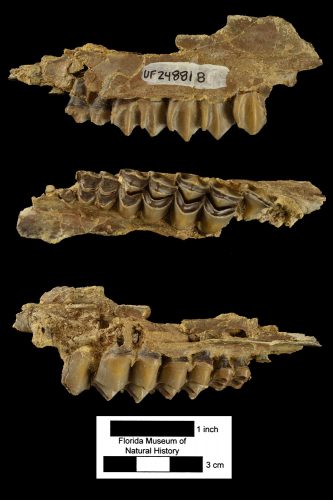
White’s bear-dog, Amphicyon longiramus, was the top carnivore in Florida 16 to 18 million years ago. Its closest modern ecologic equivalent is the grizzly bear. We have over 550 specimens of this species in our collections. Read more about this extinct bear-dog
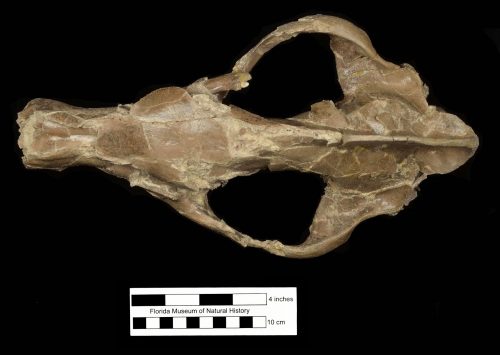
You might be familiar with the American alligator here in Florida, but this is Olsen’s alligator, Alligator olseni, an extinct species that once lived here also. It’s believed to have been much smaller than modern American alligators, rarely growing to more than seven or eight feet long, so about half the size of modern alligators. Learn more about this extinct alligator species
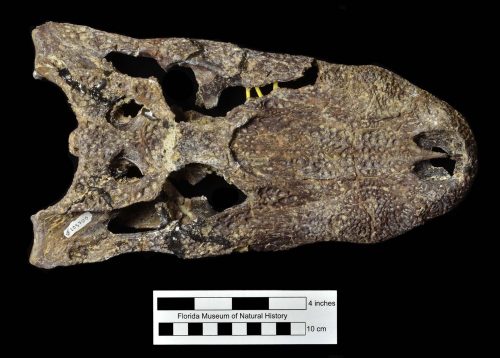
Explore more fossils
Note: Because our scientific knowledge is always expanding, some information like species names may have changed since the Florida Fossils exhibit was opened in 2004. The information on this page has been updated and may differ from the exhibit panel.
More
- Video: Miocene Epoch
- Florida Fossils: Evolution of Life and Land exhibit
- Florida Vertebrate Fossils online resource
- Fossils Horses online exhibit
